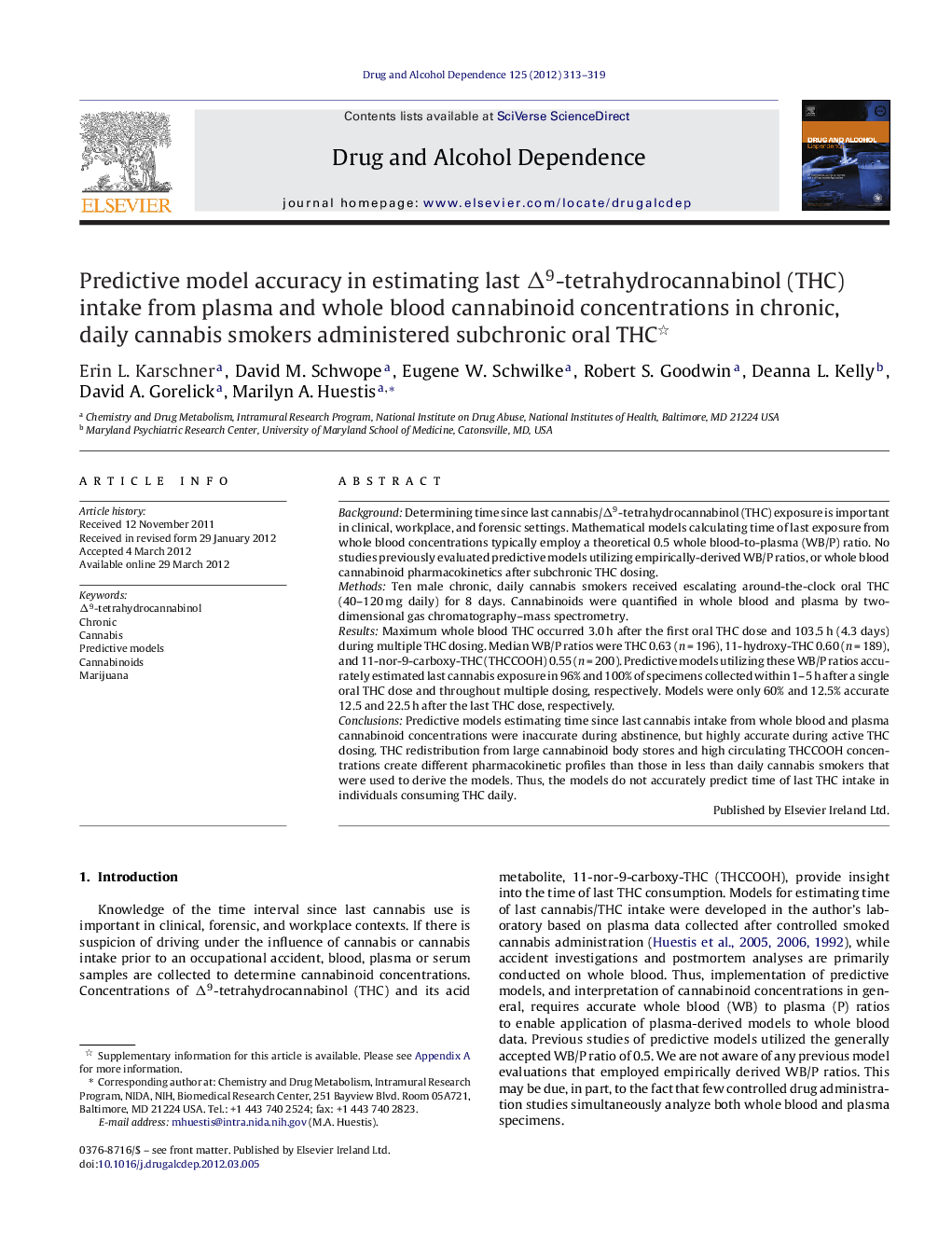| Article ID | Journal | Published Year | Pages | File Type |
|---|---|---|---|---|
| 1070069 | Drug and Alcohol Dependence | 2012 | 7 Pages |
BackgroundDetermining time since last cannabis/Δ9-tetrahydrocannabinol (THC) exposure is important in clinical, workplace, and forensic settings. Mathematical models calculating time of last exposure from whole blood concentrations typically employ a theoretical 0.5 whole blood-to-plasma (WB/P) ratio. No studies previously evaluated predictive models utilizing empirically-derived WB/P ratios, or whole blood cannabinoid pharmacokinetics after subchronic THC dosing.MethodsTen male chronic, daily cannabis smokers received escalating around-the-clock oral THC (40–120 mg daily) for 8 days. Cannabinoids were quantified in whole blood and plasma by two-dimensional gas chromatography–mass spectrometry.ResultsMaximum whole blood THC occurred 3.0 h after the first oral THC dose and 103.5 h (4.3 days) during multiple THC dosing. Median WB/P ratios were THC 0.63 (n = 196), 11-hydroxy-THC 0.60 (n = 189), and 11-nor-9-carboxy-THC (THCCOOH) 0.55 (n = 200). Predictive models utilizing these WB/P ratios accurately estimated last cannabis exposure in 96% and 100% of specimens collected within 1–5 h after a single oral THC dose and throughout multiple dosing, respectively. Models were only 60% and 12.5% accurate 12.5 and 22.5 h after the last THC dose, respectively.ConclusionsPredictive models estimating time since last cannabis intake from whole blood and plasma cannabinoid concentrations were inaccurate during abstinence, but highly accurate during active THC dosing. THC redistribution from large cannabinoid body stores and high circulating THCCOOH concentrations create different pharmacokinetic profiles than those in less than daily cannabis smokers that were used to derive the models. Thus, the models do not accurately predict time of last THC intake in individuals consuming THC daily.
